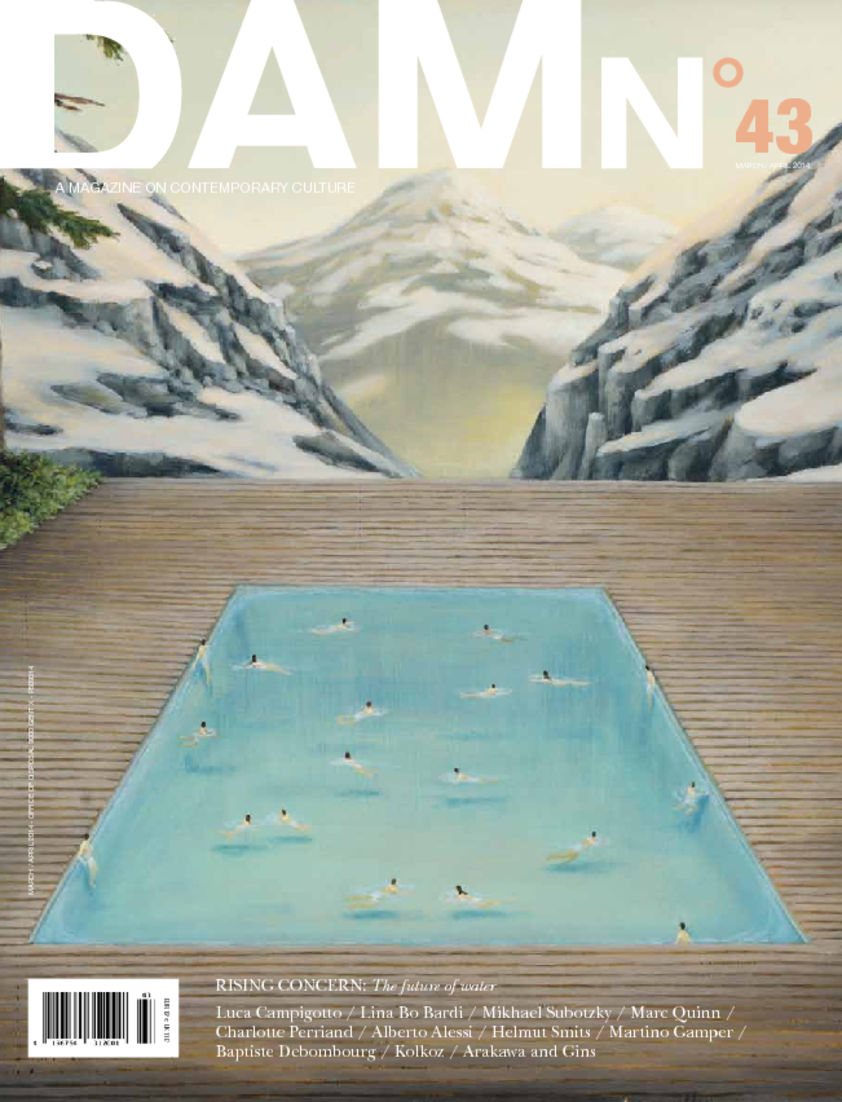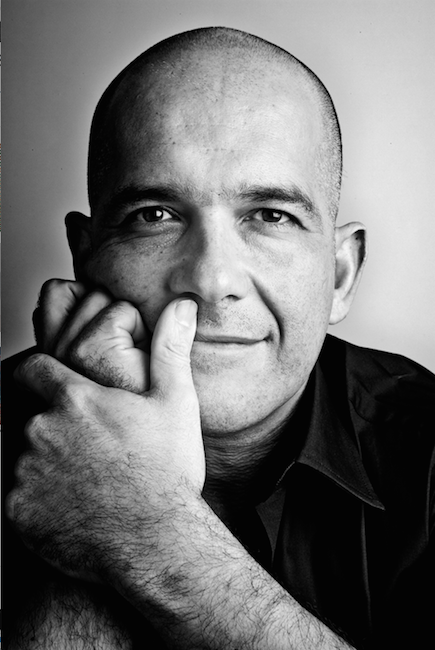Yappity Yap
Architecture Activates Culture, Culture Activates Architecture

THE LIVING: HY-FI TOWERS. The Living's 100% organic Hy-Fi towers have won MoMA PS1's Young Architects Program 2014.
YAP, the programme for young architects hosted by MoMA PS1 on a yearly basis, is almost too good to be true. Except it is true. On the strength of a key music event, this concentrated competition gives young architects a chance to design a real venue for a dreamy purpose and thereby nudge themselves into the limelight that might otherwise take them a lifetime to obtain. By its very nature, this programme ekes out the most avant-garde proposals, revealing the capabilities of the extremely talented among young architects today. And meanwhile, a stunning environment is provided for the crowd and musicians alike, in which to perform with all intensity.
For 15 years now, a full-size architectural environment has been built every summer in the courtyard of MoMA PS1 in Queens, New York, as part of the museum’s celebrated Warm-Up music series. Each year, the architectural projects are the outcome of a competition for young architects – a programme organised by the Museum of Modern Art, which has itself become influential in the field of architecture. Now, as the Young Architects Program (YAP) reaches full teenage status, expanding through a growing number of international partnerships, and as it is replicated elsewhere by other institutions, it is a good moment to offer a reflection on its value – and on what YAP is delivering to the architecture arena beyond a joyful party setting.
As it is with MoMA's original programme, on an annual basis a pool of nominators identifies upcoming young architects in the United States, a jury then selects five finalists and, lastly, a winning team designs and builds an architectural installation that activates the museum’s patios with different uses. The most enduring of these uses has been to offer a lively background for the Warm-Up Sessions – a cutting edge music programme that brings a crowd of circa five thousand youngsters to the museum on steamy Saturday afternoons. With the original intention of providing an urban beach to those who cannot afford to leave New York City during the hot summer, the YAP competition asks for architectural structures that can provide shade, water features, and seating areas. But young architects have always come back with lots more, from water cathedrals to pop-up urban farms.
Over time, new themes have served to nourish the architectural concepts on display in MoMA PS1's external spaces. On account of the input from an architect, and a competition-brief increasingly directed at themes of ecological sustainability, YAP installations have inevitably started to reflect the changing mind-sets surrounding us. They have started to reveal the concerns of younger architects –how their imagination and resourcefulness goes about making such concerns palpable. The competition became an architectural showcase in itself. The architecture proceeded to grow beyond the interactive structure that, alongside the powerful magnet of music, fostered an atypical museum attendance – the type of audience that would not otherwise step into a contemporary art museum. Indeed, YAP became a barometer of tendencies, and a rite of passage for younger architects in search of a spotlight.
Considering the architectural context in the United States today, one might immediately grasp how YAP and similar programmes have become crucial to nurturing upcoming talent. The promise of architectural creativity instilled by forward-thing architecture schools increasingly clashes with the dumb reality of a design market dominated by corporate pragmatism. As hyper regulation and the terror of liability take-over construction, it gradually becomes harder for younger practices to advance and sustain an experimental approach to the profession. If, for architects, breakthroughs always come late, it has never been so problematic to enter full practice mode on independent terms as it now is in the States. Cultural happenings that allow younger architects to experiment with actual building, while simultaneously offering them visibility in a wider context, become astonishingly relevant.
Countering tendencies
If one is to measure success through a given programme’s output, as one usually does in a result-driven milieu, one can only appreciate YAP’s enviable track record. If the architectural context provides for the competition’s significance, YAP has also built its credit on solid grounds. Earlier winners of the programme, such as SHoP, have gone-on to build outstanding architectural interventions in New York. One such case is Barclays Center in Brooklyn, which, polemic as it may be, has also been voted by many in NYC as 2013 building of the year. On the other hand, more recent finalists, such as SO-IL and MOS Architects, are now part of the rarefied young sect that have retained an experimental edge as they progress toward their first international commissions, such as SO-IL’s Kujke Gallery in Korea, or MOS’s Lali Gurans Orphanage in Nepal.
The relevance of organisations like YAP, whatever and wherever they may be, lies in the fact that, through media impact and direct experience, they offer a platform and a springboard for bright architects to become visible to new audiences. The cultural arena in which these programmes take place thus becomes the counterpoint to a market that tends towards homogenisation and economic exclusion. Through such competitions – and beyond the possibility to actually build-up their own portfolio – architects find the opportunity to reach-out to clients that may be attracted to new ideas or out-of-the-box attitudes. And if a world in crisis needs out-of-the box responses to concrete problems, this is certainly what YAP has been delivering over the past few years.
Since YAP's brief came to include requests for a reflection on issues of ecology and sustainability, the programme stimulated a specific creativity and research mode, with innovative answers to pressing problems. Architects have sought solutions that are simultaneously fun to use, architecturally provocative, and jam-packed with clues on how future strategies for sustainability can be re-imagined. This was the value of HWKN's pollution-eating Wendy in 2012, or CODA's skateboard-waste recycling Wall Party in 2013. And this, again, is the feat of the 2014 YAP winners, The Living, who are using the latest in biotech and parametric design to achieve the largest building ever to claim near-zero carbon emissions in its construction and consumption cycle. Hy-Fi is locally produced and processed, employs natural, if hi-tech products, and is 100% compostable.
While Hy-Fi advances the first instance of certified ‘organic’ architecture, other contenders to this year’s competition – whose proposals will be on display at: MoMA in New York, Maxxi Museum in Rome, various places in Santiago de Chile, and at a new venue in Asia (yet to be disclosed) – also offered thought-provoking solutions to YAP’s brief. Fake Industries / Architectural Agonism, for example, defied the very notion of market-driven sustainability by appropriating banal, recyclable materials and focusing instead on a radical architectural stance. Exploring an open-ended conceptual grid, and suggesting a new experiential take on the classic party environment of the Warm Up, their maze-like No Vacancy offered different degrees of intimacy and public participation, while delivering an ironic critique on the need for architectural icons and the nature of mass entertainment today.
Rather than showcasing an abundance of ideas that tend to get lost in the multitude, as so many competitions for young architects tend to do, YAP focuses on a handful of ideas each year. Beyond the logic of winner-takes-all, there are always plenty of valuable concepts popping out of what lots of talented finalists have offered throughout the years. As the programme gains new international venues – and zooms into attitudes and positions that are emerging amidst the younger generations of architects around the globe – YAP ultimately conveys another, less noted contribution to the field: its ability to provide an arena for the debate on ideas about where architecture culture wants to be today – and tomorrow. But that, as with everything else in life, obviously depends on how you want to use it – or rather, on how you are willing to read it. ‹
 The Living, Hy Fi.
The Living, Hy Fi.
 CODA: PARTY WALL. CODA's skateboard wall made of scrap skateboard wood won MoMA PS1's Young Architects Program 2013.
CODA: PARTY WALL. CODA's skateboard wall made of scrap skateboard wood won MoMA PS1's Young Architects Program 2013.


 Barclay s Center, Brooklyn, NY; SHoP Architects. Photo: Bruce Damonte.
Barclay s Center, Brooklyn, NY; SHoP Architects. Photo: Bruce Damonte.
 Lali Gurans, Orphanage and Learning Centre MOS Architects. Images: MOS Architects.
Lali Gurans, Orphanage and Learning Centre MOS Architects. Images: MOS Architects.
 MOS Architects
MOS Architects
 HWKN: Wendy, YAP 2012.
HWKN: Wendy, YAP 2012.
 This article appeared in DAMN°43. Order your personal copy.
This article appeared in DAMN°43. Order your personal copy.

